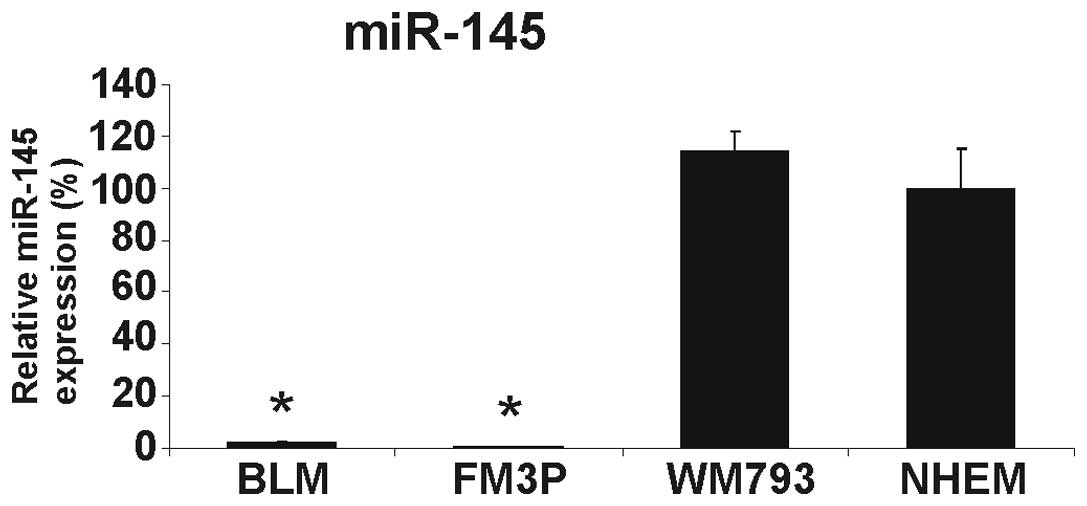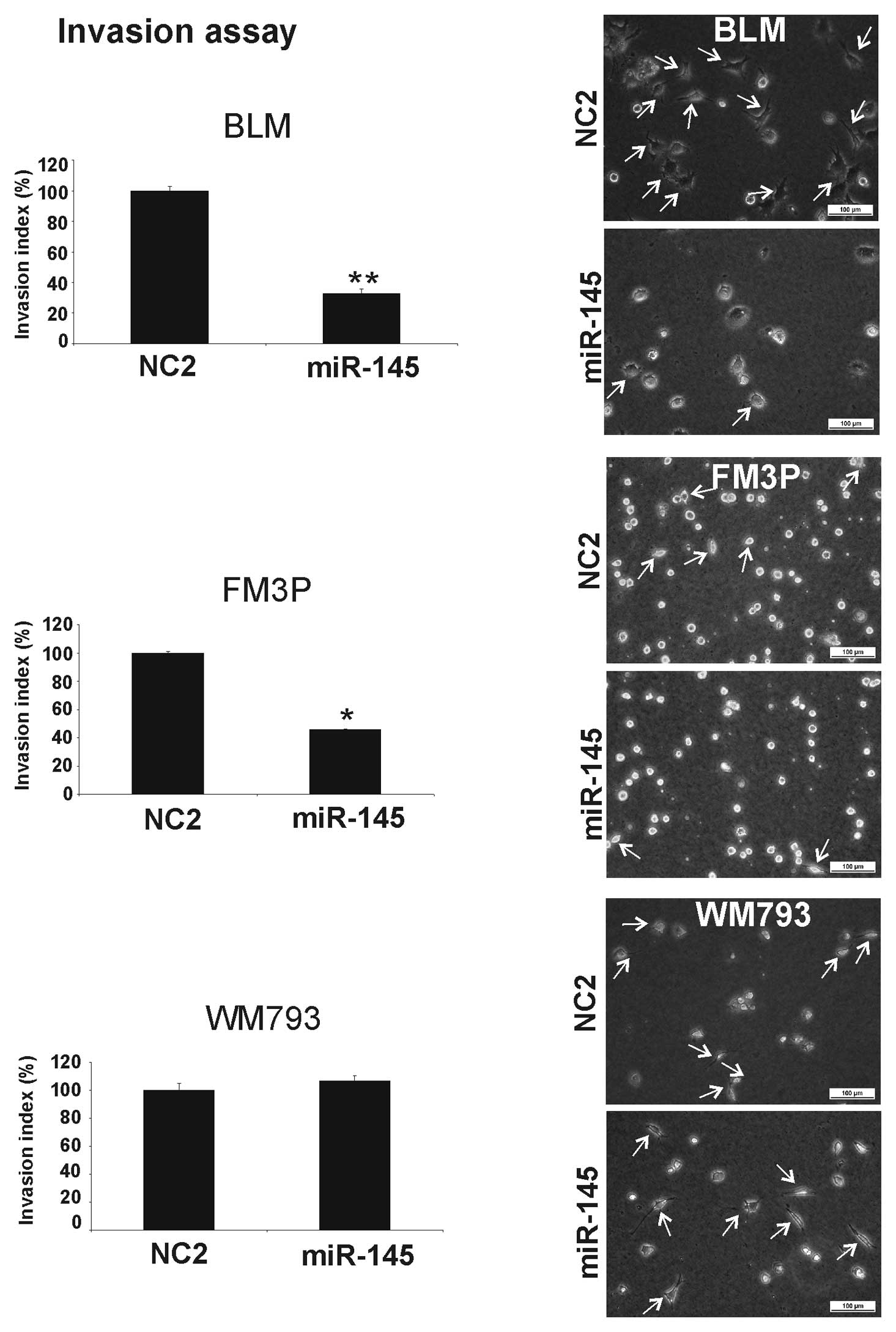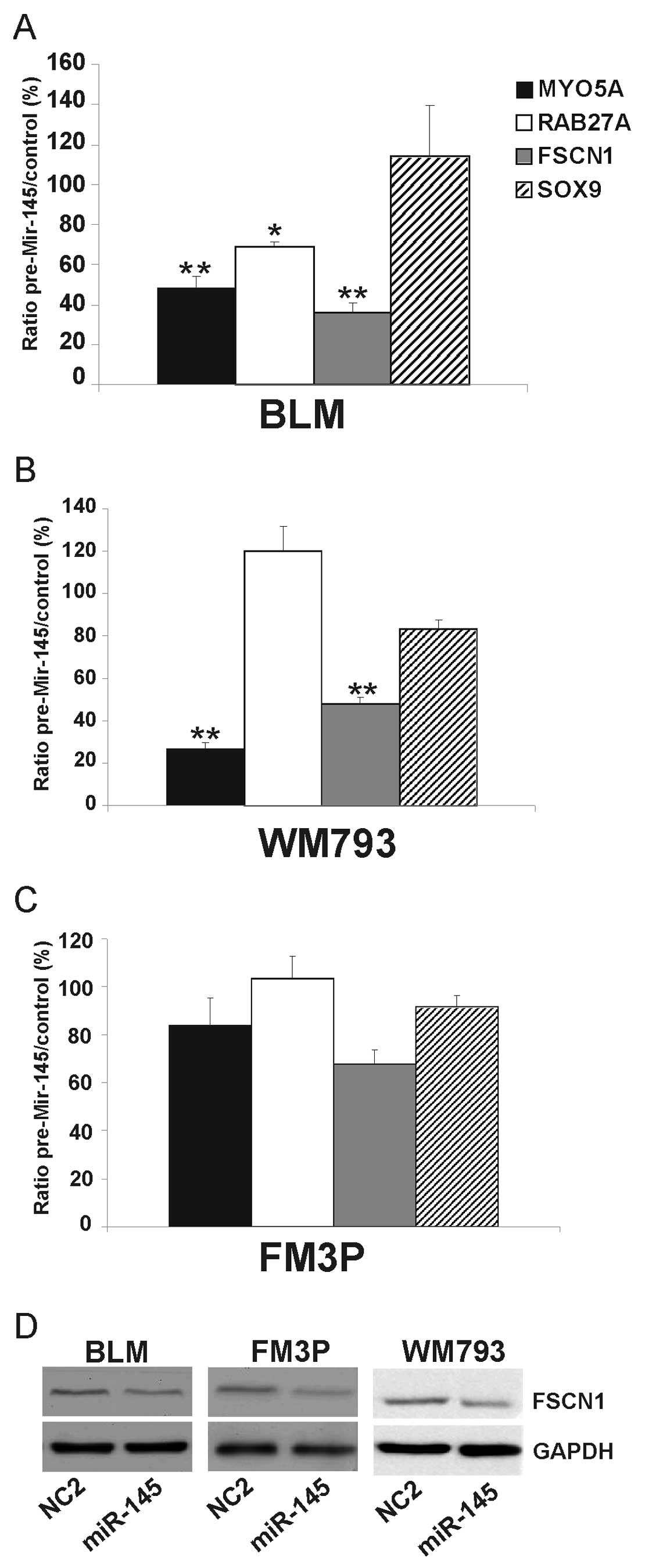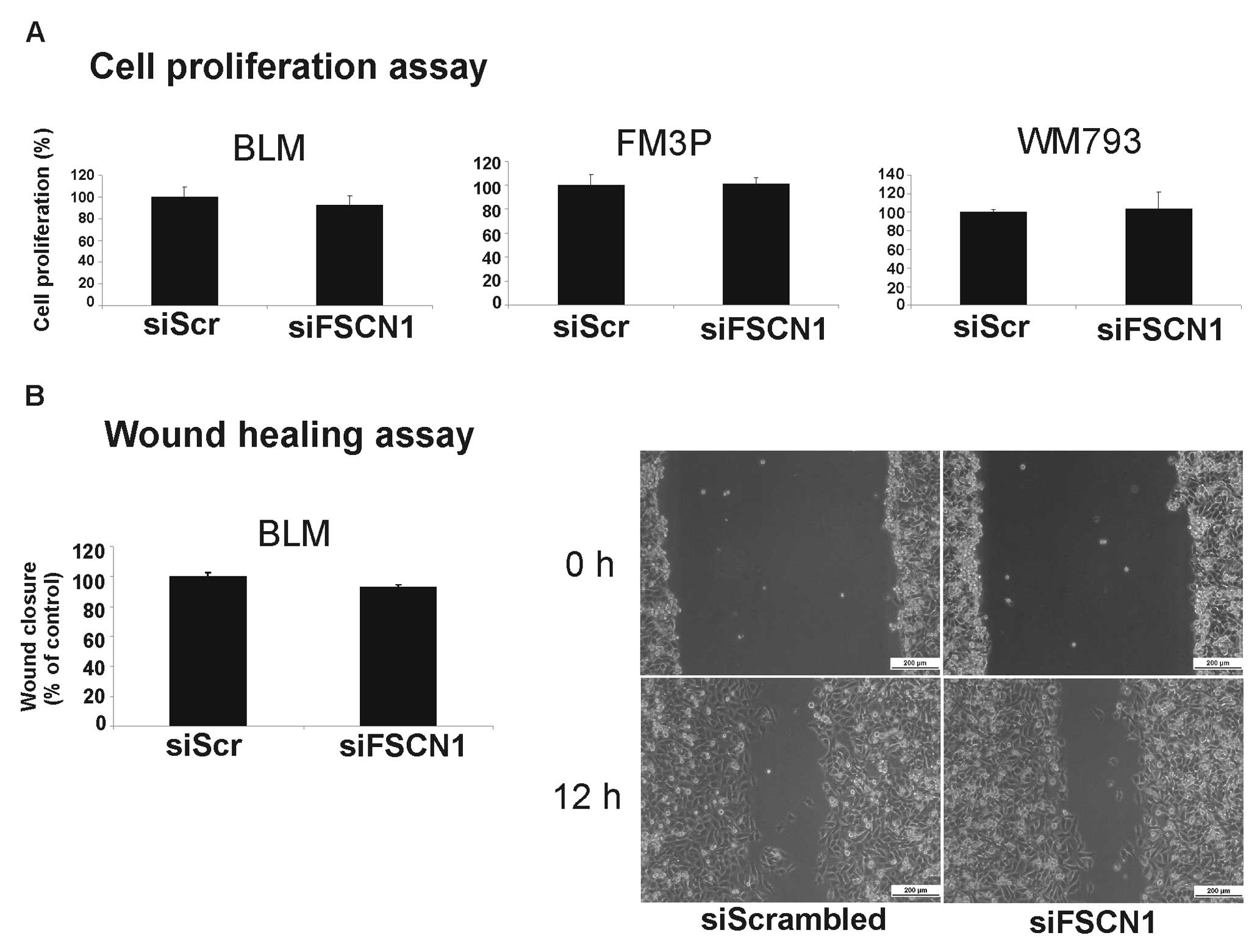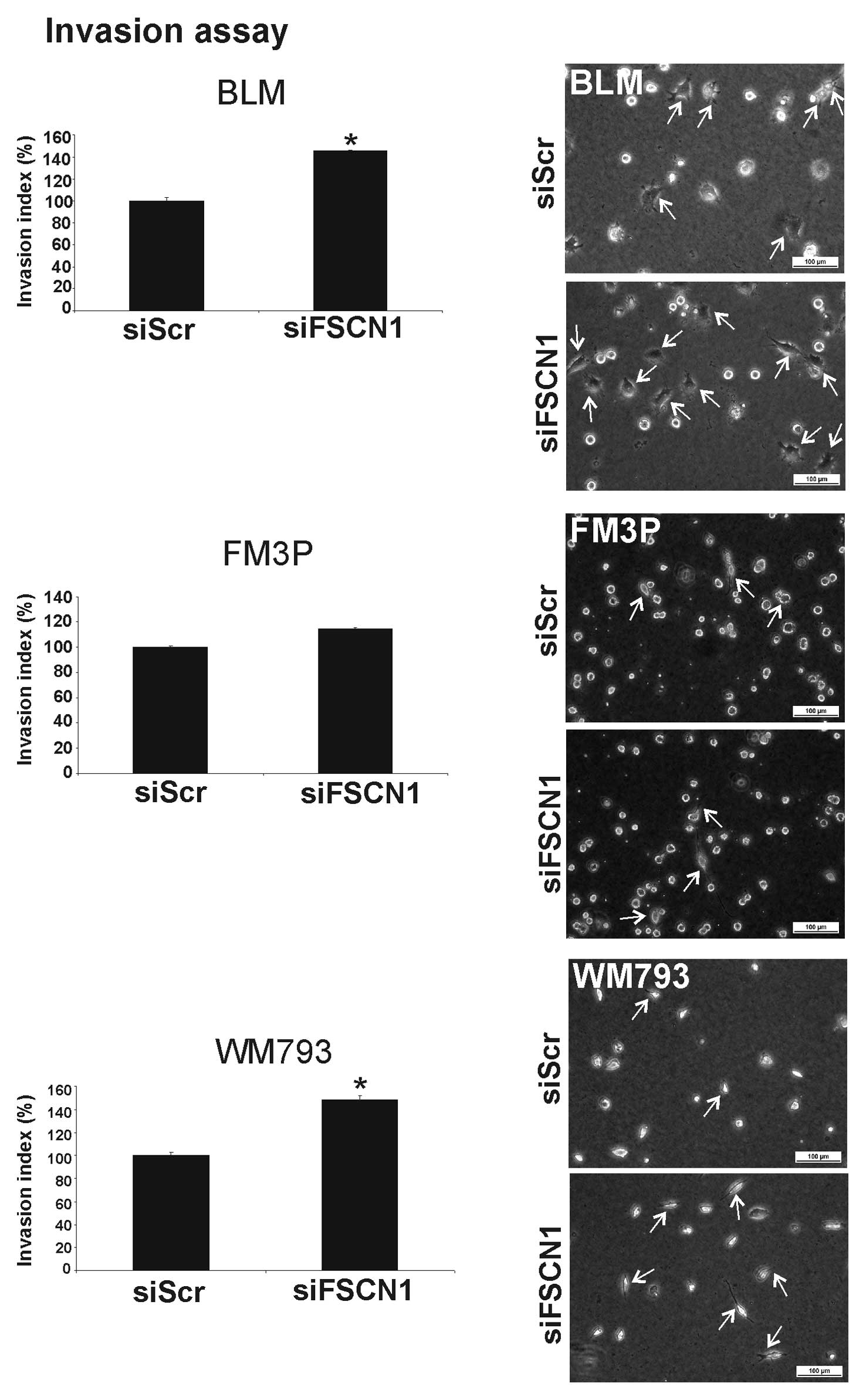|
1
|
Garbe C and Leiter U: Melanoma
epidemiology and trends. Clin Dermatol. 27:3–9. 2009. View Article : Google Scholar
|
|
2
|
Chin L: The genetics of malignant
melanoma: lessons from mouse and man. Nat Rev Cancer. 3:559–570.
2003. View
Article : Google Scholar : PubMed/NCBI
|
|
3
|
Lin K, Baritaki S, Militello L, Malaponte
G, Bevelacqua Y and Bonavida B: The role of B-RAF mutations in
melanoma and the induction of EMT via dysregulation of the
NF-κB/Snail/RKIP/PTEN circuit. Genes Cancer. 1:409–420.
2010.PubMed/NCBI
|
|
4
|
Howell PM Jr, Li X, Riker AI and Xi Y:
MicroRNA in melanoma. Ochsner J. 10:83–92. 2010.PubMed/NCBI
|
|
5
|
Mueller DW and Bosserhoff AK: Role of
miRNAs in the progression of malignant melanoma. Br J Cancer.
101:551–556. 2009. View Article : Google Scholar : PubMed/NCBI
|
|
6
|
Mueller DW and Bosserhoff AK: The evolving
concept of ‘melano-miRs’-microRNAs in melanomagenesis. Pigment Cell
Melanoma Res. 23:620–626. 2010.
|
|
7
|
Molnár V, Tamási V, Bakos B, Wiener Z and
Falus A: Changes in miRNA expression in solid tumors: an miRNA
profiling in melanomas. Semin Cancer Biol. 18:111–122.
2008.PubMed/NCBI
|
|
8
|
Segura MF, Belitskaya-Lévy I, Rose AE, et
al: Melanoma microRNA signature predicts post-recurrence survival.
Clin Cancer Res. 16:1577–1586. 2010. View Article : Google Scholar : PubMed/NCBI
|
|
9
|
Sachdeva M and Mo YY: miR-145-mediated
suppression of cell growth, invasion and metastasis. Am J Transl
Res. 2:170–180. 2010.PubMed/NCBI
|
|
10
|
Iorio MV, Ferracin M, Liu CG, et al:
MicroRNA gene expression deregulation in human breast cancer.
Cancer Res. 65:7065–7070. 2005. View Article : Google Scholar : PubMed/NCBI
|
|
11
|
Noguchi S, Mori T, Hoshino Y, et al:
Comparative study of anti-oncogenic microRNA-145 in canine and
human malignant melanoma. J Vet Med Sci. 74:1–8. 2012. View Article : Google Scholar : PubMed/NCBI
|
|
12
|
Kirkin AF, Petersen TR, Olsen AC, Li L,
thor Straten P and Zeuthen J: Generation of human-melanoma-specific
T lymphocyte clones defining novel cytolytic targets with panels of
newly established melanoma cell lines. Cancer Immunol Immunother.
41:71–81. 1995. View Article : Google Scholar
|
|
13
|
Naeyaert JM, Eller M, Gordon PR, Park HY
and Gilchrest BA: Pigment content of cultured human melanocytes
does not correlate with tyrosinase message level. Br J Dermatol.
125:297–303. 1991. View Article : Google Scholar : PubMed/NCBI
|
|
14
|
Van Gele M, Geusens B, Schmitt AM, Aguilar
L and Lambert J: Knockdown of myosin Va isoforms by RNAi as a tool
to block melanosome transport in primary human melanocytes. J
Invest Dermatol. 128:2474–2484. 2008.PubMed/NCBI
|
|
15
|
Vandesompele J, De Paepe A and Speleman F:
Elimination of primer-dimer artifacts and genomic coamplification
using a two-step SYBR green I real-time RT-PCR. Anal Biochem.
303:95–98. 2002. View Article : Google Scholar : PubMed/NCBI
|
|
16
|
Vandesompele J, De Preter K, Pattyn F, et
al: Accurate normalization of real-time quantitative RT-PCR data by
geometric averaging of multiple internal control genes. Genome
Biol. 3:Research00342002. View Article : Google Scholar : PubMed/NCBI
|
|
17
|
De Wever O, Hendrix A, De Boeck A, et al:
Modeling and quantification of cancer cell invasion through
collagen type I matrices. Int J Dev Biol. 54:887–896.
2010.PubMed/NCBI
|
|
18
|
Dynoodt P, Mestdagh P, Van Peer G, et al:
Identification of miR-145 as a key regulator of the pigmentary
process. J Invest Dermatol. August 16–2012.(E-pub ahead of print).
View Article : Google Scholar
|
|
19
|
Chiyomaru T, Enokida H, Tatarano S, et al:
miR-145 and miR-133a function as tumour suppressors and directly
regulate FSCN1 expression in bladder cancer. Br J Cancer.
102:883–891. 2010. View Article : Google Scholar : PubMed/NCBI
|
|
20
|
Fuse M, Nohata N, Kojima S, et al:
Restoration of miR-145 expression suppresses cell proliferation,
migration and invasion in prostate cancer by targeting FSCN1. Int J
Oncol. 38:1093–1101. 2011.PubMed/NCBI
|
|
21
|
Kim SJ, Oh JS, Shin JY, et al: Development
of microRNA-145 for therapeutic application in breast cancer. J
Control Release. 155:427–434. 2011. View Article : Google Scholar : PubMed/NCBI
|
|
22
|
Mascellani N, Tagliavini L, Gamberoni G,
et al: Using miRNA expression data for the study of human cancer.
Minerva Biotec. 20:23–30. 2008.
|
|
23
|
Sachdeva M, Zhu S, Wu F, et al: p53
represses c-Myc through induction of the tumor suppressor miR-145.
Proc Natl Acad Sci USA. 106:3207–3212. 2009. View Article : Google Scholar : PubMed/NCBI
|
|
24
|
Sachdeva M and Mo YY: MicroRNA-145
suppresses cell invasion and metastasis by directly targeting mucin
1. Cancer Res. 70:378–387. 2010. View Article : Google Scholar : PubMed/NCBI
|
|
25
|
Yang B, Guo H, Zhang Y, Chen L, Ying D and
Dong S: MicroRNA-145 regulates chondrogenic differentiation of
mesenchymal stem cells by targeting Sox9. PLoS One. 6:e216792011.
View Article : Google Scholar : PubMed/NCBI
|
|
26
|
Kureishy N, Sapountzi V, Prag S, Anilkumar
N and Adams JC: Fascins, and their roles in cell structure and
function. Bioessays. 24:350–361. 2002. View Article : Google Scholar : PubMed/NCBI
|
|
27
|
Hashimoto Y, Skacel M and Adams JC: Roles
of fascin in human carcinoma motility and signaling: prospects for
a novel biomarker? Int J Biochem Cell Biol. 37:1787–1804. 2005.
View Article : Google Scholar : PubMed/NCBI
|
|
28
|
Yildiz L, Kefeli M, Aydin O and Kandemir
B: Fascin expression in melanocytic lesions of the skin. Eur J
Dermatol. 19:445–450. 2009.PubMed/NCBI
|
|
29
|
Goncharuk VN, Ross JS and Carlson JA:
Actin-binding protein fascin expression in skin neoplasia. J Cutan
Pathol. 29:430–438. 2002. View Article : Google Scholar : PubMed/NCBI
|
|
30
|
Zhang J, Guo H, Zhang H, et al: Putative
tumor suppressor miR-145 inhibits colon cancer cell growth by
targeting oncogene Friend leukemia virus integration 1 gene.
Cancer. 117:86–95. 2011. View Article : Google Scholar : PubMed/NCBI
|
|
31
|
Götte M, Mohr C, Koo CY, et al:
miR-145-dependent targeting of junctional adhesion molecule A and
modulation of fascin expression are associated with reduced breast
cancer cell motility and invasiveness. Oncogene. 29:6569–6580.
2010.PubMed/NCBI
|



